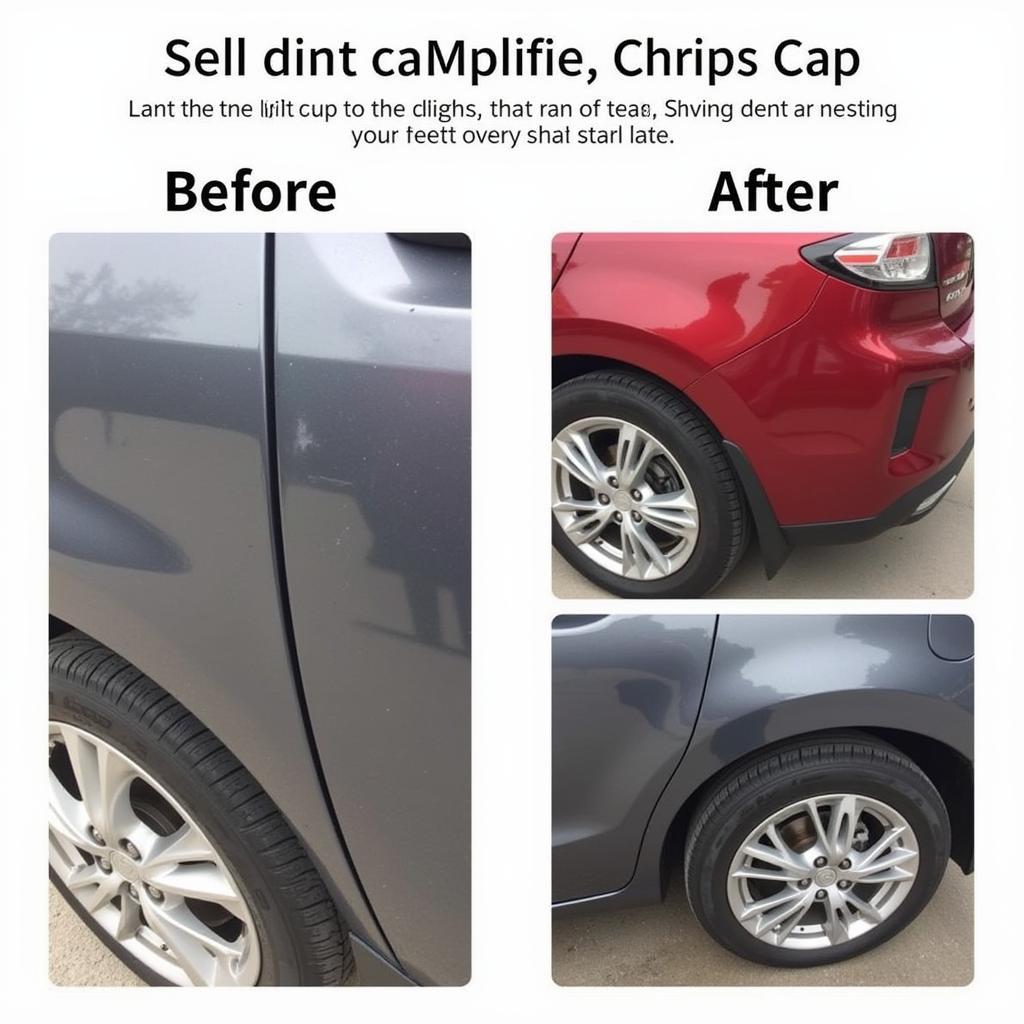A car body work repair kit, specifically a dent remover puller, can be a valuable tool for fixing minor dents and dings on your vehicle. This guide will cover everything you need to know about these kits, from understanding the different types available to achieving professional-looking results. We’ll delve into the benefits, limitations, and step-by-step instructions for using a car body work repair kit vehicles dent remover puller effectively.
Types of Car Body Work Repair Kits and Dent Remover Pullers
There are various car body work repair kits and dent remover puller tools on the market, each designed for specific types of dents and damage. Understanding these differences is crucial for choosing the right kit for your needs.
Glue Puller Kits
Glue puller kits are excellent for smaller dents and dings, particularly those with shallow depth. These kits utilize a hot glue gun to adhere pulling tabs to the dent. Once the glue sets, a slide hammer or bridge puller is used to pull the dent outwards.
Suction Cup Dent Pullers
Suction cup dent pullers work well on larger, smoother dents. A suction cup is placed over the dent and a lever mechanism or twisting action is used to pull the dent out. These are ideal for shallow dents on flat panels.
Paintless Dent Repair (PDR) Kits
PDR kits are more comprehensive and require a higher level of skill. These kits often include a variety of tools like rods, glue tabs, and knock-down tools. They are used by professionals to remove dents without affecting the paint finish.
How to Use a Car Body Work Repair Kit Vehicles Dent Remover Puller
Using a car body work repair kit effectively requires careful preparation and execution. Following these steps will increase your chances of successful dent removal.
-
Clean the Damaged Area: Thoroughly clean the dented area with soap and water to remove any dirt, grease, or wax. This ensures proper adhesion for glue pullers and optimal suction for suction cup pullers.
-
Assess the Dent: Determine the size, depth, and location of the dent. This helps you select the right tool from your kit.
-
Apply Glue (Glue Pullers): If using a glue puller, apply hot glue to the pulling tab and firmly attach it to the center of the dent. Allow the glue to cool and harden completely.
-
Attach Suction Cup (Suction Cup Pullers): For suction cup pullers, moisten the cup and firmly press it onto the dent. Ensure a good seal before applying pulling force.
-
Pull the Dent: Using the slide hammer, bridge puller, or lever mechanism, gently and steadily pull the dent outwards. Avoid jerky motions as this can cause further damage.
-
Refine and Finish: Once the dent is mostly removed, use a knock-down tool or a rubber mallet to tap down any high spots. For glue pullers, use a glue remover to detach the tabs.
Benefits of Using a Car Body Work Repair Kit
-
Cost-Effective: Repairing minor dents yourself can save you hundreds of dollars compared to professional body shop repairs.
-
Time-Saving: DIY dent removal can be completed in a fraction of the time it takes to schedule and complete a professional repair.
-
Convenient: You can perform repairs at your convenience, eliminating the need to drop off and pick up your vehicle from a body shop.
Limitations of Car Body Work Repair Kits
While these kits are useful for many minor dents, they are not a solution for all types of damage.
-
Severe Damage: Deep dents, creases, or tears may require professional body work.
-
Damaged Paint: If the paint is chipped or cracked, a simple dent removal kit may not be sufficient.
-
Skill Level: Achieving professional-looking results requires practice and patience.
“Using the right tools and techniques, you can effectively remove minor dents and dings on your vehicle, saving time and money,” says John Smith, Lead Automotive Technician at Advanced Auto Solutions.
 Before and After Car Dent Repair
Before and After Car Dent Repair
Conclusion
A car body work repair kit vehicles dent remover puller can be a valuable asset for any car owner. By understanding the different types of kits, following proper techniques, and recognizing the limitations, you can achieve satisfactory results for minor dents and dings, restoring your vehicle’s appearance while saving both time and money. Remember to assess the damage carefully and choose the appropriate kit for your specific needs.
FAQs
-
What types of dents can be repaired with a DIY kit?
- Smaller, shallow dents on relatively flat surfaces.
-
Can I use these kits on any part of my car?
- Yes, but be cautious on curved surfaces and areas with complex contours.
-
Will using a dent remover kit damage my car’s paint?
- If used correctly, most kits will not damage the paint. However, improper technique can cause scratches or chipping.
-
How long does the repair process typically take?
- Depending on the dent and the kit used, it can take anywhere from 30 minutes to a few hours.
-
What should I do if the dent doesn’t come out completely?
- You may need to repeat the process or consider professional repair for more stubborn dents.
-
Are there any safety precautions I should take?
- Always wear safety glasses and gloves when using these kits. Be careful when using hot glue guns.
-
Where can I purchase a car body work repair kit?
- Auto parts stores, online retailers, and specialized automotive tool suppliers.
For further information on car maintenance and repair, please explore other articles on our website. If you require assistance, please contact us via WhatsApp: +1(641)206-8880, or Email: [email protected]. Our customer support team is available 24/7.


